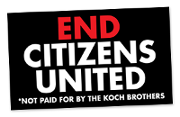Biblio
(1981). How to Win Friends and Influence People.
"If some people are so hungry for a feeling of importance that they actually go insane to get it, imagine what miracle you and I can achieve by giving people honest appreciation this side of insanity." (p. 58)
(2002). Leadership Skills For Managers.
"W. Edwards Deming, one of the founding fathers of the quality movement, asserted that employees are rightfully entitled to the 'pride of workmanship'. Essential to that pride are job security, expectations, clear communications, and the proper tools." (p. 7)
(1969). Business as a Game.
"Men down the line often tend to judge the boss with unrealistic severity—to expect perfection from him, complete rationality, absolute efficiency. Yet a little observation tells us that business is not carried out in a rational way....Wastefulness, shortsighted policies, impulsive moves, excessive use of trial and error methods, strange personal quirks in high places—all this is normal in business." (p. 71)
(1987). Finite and Infinite Games : A Vision of Life as Play and Possibility.
"'Machine' is used here as inclusive of technology and not as an example of it—as a way of drawing attention to the mechanical rationality of technology. We might be surprised by the technological devices that spring from the imagination of gifted inventors and engineers, but there is nothing surprising in the technology itself. The physicist's bomb is as thoroughly mechanical as the Neanderthal's lever—each the exercise of calculable cause-and-effect sequences." (p. 80)
(1995). Breakfast at the Victory : The Mysticism of Ordinary Experience.
"When you need a teacher, the Hindus say, a teacher will appear. But we can't know in advance what we need to learn, else we would not need to learn it. Therefore, we won't know who our teachers are until we have been taught. As a result, every teaching is a surprise." (p. 40)
(2010). Can Being Creative Improve Your Health?.
"Highly creative individuals have long noted the salutary effects of creative activity on both physical and mental health. Many types of creative work can relieve stress and enhance positive mood, two major factors in promoting good health."
(1999). Helping Someone with Mental Illness.
"Work fulfills many needs. It creates structure and meaning in our lives, gives us a sense of accomplishment, provides income and security, and also affords us the chance to socialize with friends and colleagues and to feel as if we belong to a community." (p. 102)
(1989). Nasty People: How to Stop Being Hurt by Them Without Becoming One of Them.
"A punch in the nose is obvious, and it heals. However, an attack on self-esteem—at the right moment and in the right way—can last a lifetime." (p. 9)
(1991). The Corporate Negaholic: How to Deal Successfully With Negative Colleagues, Managers and Corporations.
"The alternative action was to look at the inequities and the resentments and find solutions which would create a win-win outcome. Unless everyone wins, no one really wins." (p. 91)
(2002). Programming Jakarta Struts.
(1998). The Bad Attitude Survival Guide: Essential Tools For Managers.
"A consistent, knee-jerk negative response to bad news or negative circumstances is a common occurrence and creates an unhealthy organizational culture. Many organizations are well known for shooting the messenger. Some managers have such a high negative emotional response to problems or bad news, their employees learn to avoid their manager in times of trouble or crisis. This is a deadly organizational circumstance because information that frequently could serve to eliminate a problem or stop a small crisis from escalation isn't shared up the ladder, as lower-level employees refuse to expose themselves to the inevitable wrath. The price the organization pays for allowing this negative culture is incalculable." (p. 79)
(1994). Success through teamwork: a practical guide to interpersonal team dynamics.
"Not all team members are equally motivated to participate and be productive. In addition to motivating productive members, you must motivate average or nonparticipating members to increase their commitment to the team.
The following strategies can help you turn nonparticipating team members into active participants:
* Seek their advice
* Make them teachers
* Involve them in presentations
* Delegate 'star projects' " (p. 85)
The following strategies can help you turn nonparticipating team members into active participants:
* Seek their advice
* Make them teachers
* Involve them in presentations
* Delegate 'star projects' " (p. 85)
(1985). Stress Management: A Comprehensive Guide to Wellness.
"Are You Sitting on a Two-Legged Stool?
Most of us are striving for a happy and meaningful life. Balance is needed to achieve and maintain such a life. Balance means that you avoid building your life around one person or one thing, no matter how wonderful it may seem. If you do, no matter who or what it is, losing it could be devastating." (p. 186)
Most of us are striving for a happy and meaningful life. Balance is needed to achieve and maintain such a life. Balance means that you avoid building your life around one person or one thing, no matter how wonderful it may seem. If you do, no matter who or what it is, losing it could be devastating." (p. 186)
(1997). Business Law.
(1994). Keeping the Rabble in Line: Interviews with David Barsamian.
"Any form of concentrated power, whatever it is, is not going to want to be subjected to popular democratic control or, for that matter, to market discipline. Powerful sectors, including corporate wealth, are naturally opposed to functioning democracy, just as they're opposed to functioning markets, for themselves, at least. It's just natural. They do not want external constraints on their capacity to make decisions and act freely. It entails that the elites will be extremely undemocratic." (p. 242)
(1993). Influence: Science and Practice.
(2001). The Working Life: The Promise and Betrayal of Modern Work.
"The flexible workplace can be a solution to the time problems families face, or it can be the root of their problems. We have gone from moving our homes into the organization to moving the organization into our homes. It again raises the question of whether life should be part of work or work part of life. Where do you go at the end of the day when you work at home?"
(1996). Surviving Your Boss: How to Cope With Office Politics and Get on With Your Job.
"In any situation of change, conflict, or misunderstanding there is anger. Anger frequently masks fear. Fear in situations of conflict and change is very predictable. And with anger there is usually blame, for oneself and for others. Anger is one of the most destructive forces in the workplace today. It is ultimately a fatal emotion. Studies show that about 20 percent of us have hostility levels high enough to be dangerous—to our own health and to those around us. Hostility level is associated with increased smoking, drinking, eating, and weight gain. Hostility has long been a well-established contributor to coronary risk and heart disease, as well as myriad other illnesses.
It's likely you have experienced the relationship between anger, depression, resentment, and low self-esteem. You know about the aches and pains that come from tension. The fatigue and lack of joy that ensue as days are increasingly filled with the burden of frustration and suppressed rage." (p. 96)
It's likely you have experienced the relationship between anger, depression, resentment, and low self-esteem. You know about the aches and pains that come from tension. The fatigue and lack of joy that ensue as days are increasingly filled with the burden of frustration and suppressed rage." (p. 96)
(1987). Programming in Prolog.
(2000). Abolishing Performance Appraisals: Why They Backfire and What to Do Instead.
In the introduction to the book, subtitled "Letting Go of a Hopeless Ritual", the authors include the following quotation: "The world will not be saved by old minds with new programs. If the world is saved, it will be saved by new minds—with no programs."
The authors argue that appraisal ratings produce "unintended consequences—the insidious, destructive, and counterproductive effects of giving people ratings about their work performance. Whether accurate or not, people are psychologically affected by ratings. And except for people rated at the highest end of the scale, the impact is usually negative and consequently counterproductive to the cause of improving performance." (p. 69)
The authors argue that appraisal ratings produce "unintended consequences—the insidious, destructive, and counterproductive effects of giving people ratings about their work performance. Whether accurate or not, people are psychologically affected by ratings. And except for people rated at the highest end of the scale, the impact is usually negative and consequently counterproductive to the cause of improving performance." (p. 69)
(2004). One Who Is Not Busy, The: Connecting with Work in a Deeply Satisfying Way.
As taskdoers, worker bees, we hit one note and play it over and over again. We bury ourselves in activity the way substance abusers bury themselves in drink or drugs; no matter how many things we race to do during the day, there's always something more to be done. When there is a threat of hurt or disappointment due to circumstances beyond our control, there's no time to feel it. The monthly sales figures have to be calculated, the client gifts selected and sent, the copier contract gone over, the boardroom reserved for a partners meeting. The substance abuser's overall feeling is unpleasant enough—frantic, uneasy—but he does manage to avoid the real lows: the grief, the anger, the disillusionment." (p.97)
(C)2014 CC-BY-NC 3.0, workcreatively.org











 ]
]